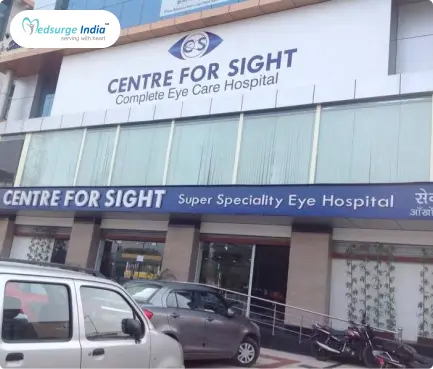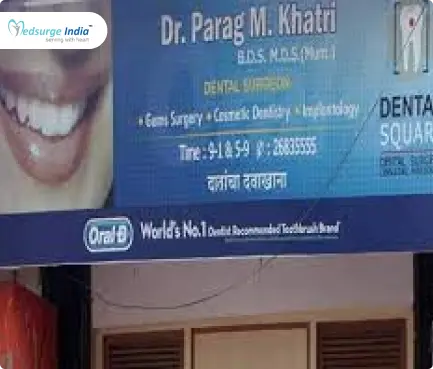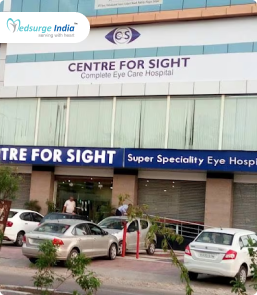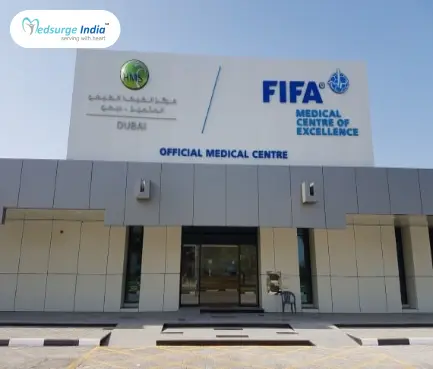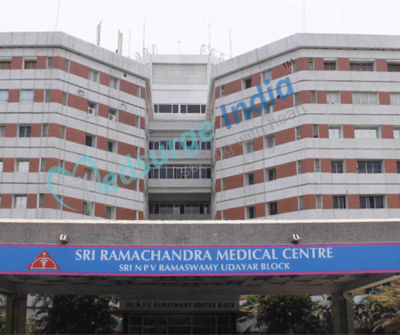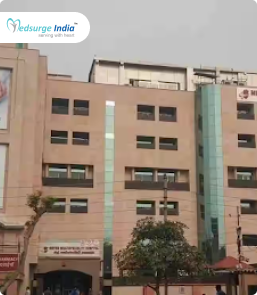
What is the Cost of Sjogren’s Syndrome Treatment in Turkey?
Sjogren’s syndrome treatment cost in Turkey starts from 3500 USD and can go up to 12,000 USD depending on the severity of the condition. The cost of Sjogren’s surgery in Turkey will also depend on other factors. Below here are the various reasons that can impact its cost.
Factors That Can Affect Sjogren’s Syndrome Treatment Cost in Turkey
Several critical factors affect the expenses related to the treatment of Sjogren’s Syndrome treatment cost in Turkey:
Type of Treatment Needed: Some treatment options for Sjogren’s Syndrome are more expensive than others.
Location of the Healthcare Facility: The cost of treatment in private hospitals or clinics is generally higher compared to public hospitals.
Cost of Medications: The price of certain medications can significantly impact the overall expenses of Sjogren’s Syndrome treatment in Turkey.
Patient’s Health Status: The complexity of a patient’s health condition can influence the length of treatment, thereby affecting the cost of Sjogren’s syndrome treatment in Turkey.
Length of Treatment: Extended treatment periods that require multiple visits can result in increased overall expenses for Sjogren’s syndrome treatment cost in Turkey.
Qualifications and Experience of Healthcare Providers: Rheumatologists with significant expertise and recognition typically charge higher fees, which adds to the overall costs of Sjogren’s syndrome treatment in Turkey.
Sjogren’s Syndrome Treatment Cost in Different Cities in Turkey
| Cities | Prices |
| Istanbul | $3500 to $12,000 |
| Antalya | $3500 to $12,000 |
| Izmir | $3500 to $12,000 |
| Ankara | $3500 to $12,000 |
What is Sjogren’s Syndrome?
Sjogren’s syndrome is an autoimmune disorder that results in reduced moisture production by the glands. This condition leads to persistent dryness in various parts of the body, particularly affecting the eyes and mouth. The correct pronunciation of Sjogren’s syndrome is “SHOW-gren’s syndrome.”
In individuals with Sjogren’s syndrome, the immune system attacks the glands responsible for producing and regulating moisture in the body, which includes:
- The tear glands
- The salivary glands in the mouth
- The nasal passages
- The throat
- The digestive tract
- The vaginal area.
Types of Sjogren’s Syndrome
Healthcare professionals categorize Sjogren’s syndrome into two distinct types:
- Primary Sjogren’s syndrome is characterized by its independent onset, occurring without the influence of another medical condition.
- Secondary Sjogren’s syndrome is associated with the presence of another illness that either induces or triggers its development.
What are the Symptoms of Sjogren’s Syndrome?
The primary symptom associated with Sjogren’s syndrome is an atypical dryness that manifests in various forms, such as:
- Dry or itchy eyes.
- Dry mouth (xerostomia), along with mouth sores or thickened saliva.
- Vaginal dryness.
- Dry skin.
- Dry nasal passages, often leading to frequent nosebleeds.
- Dry throat, which may include persistent coughing.
What Are the Causes of Sjogren’s Syndrome?
Sjogren’s syndrome is classified as an autoimmune disorder, which occurs when the immune system mistakenly attacks the body, causing harm. The precise mechanisms behind the immune system’s targeting of glands in Sjogren’s syndrome remain unclear to medical professionals and researchers. There are two main forms of Sjogren’s syndrome: primary, where the cause is unknown and secondary, which arises as a result of other diseases. It has been observed that various health conditions, particularly other autoimmune disorders, and certain viral infections, can lead to secondary Sjogren’s syndrome.
Viral infections that may trigger secondary Sjogren’s syndrome include:
- Hepatitis C
- Cytomegalovirus (CMV)
- Epstein-Barr virus
- Human T-cell leukemia virus type 1 (HTLV–I)
- COVID-19.
Secondary Sjogren’s syndrome can occur alongside any autoimmune disease. Some autoimmune conditions that are commonly associated with Sjogren’s syndrome include:
- Rheumatoid arthritis
- Psoriatic arthritis
- Lupus.
While it is recognized that Sjogren’s syndrome is linked to other diseases, having these related conditions does not guarantee the development of Sjogren’s syndrome. Similarly, although Sjogren’s syndrome may increase the likelihood of developing other autoimmune diseases, women diagnosed with this condition are not assured of experiencing them.
How is Sjogren’s Syndrome Diagnosed and Treated?
Diagnosing Sjogren’s syndrome can be complex due to the variability of its signs and symptoms among individuals, which may also mimic those of other conditions. Additionally, some symptoms may be confused with side effects from various medications.
To confirm a diagnosis of Sjogren’s syndrome and exclude other potential illnesses, several tests may be conducted:
- Blood Test
- Eye Examination
- Imaging Studies
- Biopsy.
The treatment approach for Sjogren’s syndrome is tailored to the specific areas of the body that are affected. Patients often manage symptoms such as dry mouth and dry eyes with over-the-counter eye drops and increased fluid intake. However, some individuals may require prescription medications or surgical interventions.
To reduce eye inflammation, an eye care professional may prescribe medicated eye drops like lifitegrast (Xiidra) or cyclosporine (Restasis) for those experiencing moderate to severe dry eyes.
For enhancing saliva production, medications such as cevimeline (Evoxac) and pilocarpine (Salagen) can stimulate saliva and, in some cases, tear production. Possible side effects include sweating, flushing, abdominal discomfort, and increased urination.
To address specific complications, nonsteroidal anti-inflammatory drugs (NSAIDs) and other medications for arthritis may be beneficial if arthritis symptoms are present. Antifungal treatments are recommended for oral yeast infections.
For systemic symptoms, hydroxychloroquine (Plaquenil), a medication typically used for malaria, is often effective in managing Sjogren’s syndrome. Immunosuppressive drugs like methotrexate (Trexall) may also be prescribed.
In cases of severe dry eyes, a minor surgical procedure known as punctal occlusion may be performed. This procedure involves sealing the tear ducts to prevent tears from draining away and using silicone or collagen plugs to help retain moisture in the eyes.
Who is at Risk?
Sjögren’s syndrome can affect anyone; however, certain demographics are at a higher risk:
Women. Over 90% of individuals diagnosed with Sjögren’s syndrome are women. While men can also be affected, it occurs significantly less frequently.
- Individuals with other autoimmune disorders. Approximately 50% of those with Sjögren’s syndrome also have at least one additional autoimmune condition.
- Adults aged 45 to 55. Although children, younger adults, and those over 55 can develop Sjögren’s syndrome, it is most commonly diagnosed in individuals within this age bracket.
- Individuals with a family history of Sjögren’s syndrome. About 10% of those with the condition have a direct relative, such as a biological parent or sibling, who also has it.
Conclusion
Managing Sjogren’s syndrome can be quite challenging. The discomfort of experiencing dry eyes, a dry mouth, or concerns about pain during intercourse due to vaginal dryness can be particularly frustrating. However, the positive aspect is that many individuals with Sjögren’s syndrome successfully manage their symptoms once they identify an effective treatment combination.
If you notice changes in your symptoms, an increase in severity, or if they are interfering with your daily life, it is important to discuss potential adjustments to your treatment plan with your healthcare provider. Inquire about the frequency of necessary eye examinations, dental cleanings, and other assessments. These regular checkups are essential for preventing complications.
Get Free Cost Estimation
The Most Important Frequently Asked Questions
Q: Is the Effects of the Treatment Permanent?
A: While there is currently no cure for Sjogren’s syndrome, treatment is a continuous process. Patients are advised to take preventive measures to avoid dryness in their mouths and eyes, as recommended by their healthcare providers.
Q: Are There Any Negative Effects Associated with the Treatment?
A: The medications prescribed for Sjogren’s syndrome come with specific side effects. For instance, pilocarpine may cause flushing, increased urination, headaches, sweating, and abdominal discomfort.
Q: What Is the Expected Duration of Recovery?
A: Recovery time varies for each individual due to the differing symptoms of Sjogren’s syndrome. The nature of the condition and the treatment method employed both influence recovery. Typically, individuals may experience symptom relief within eight months to a year. After surgical interventions, the recovery process and return to normal activities may take longer.
Q: Who Is Ineligible for This Therapy?
A: Individuals do not need to consult a physician for temporary dry mouth or dryness in other areas of the body. Various factors, such as environmental conditions, can lead to dryness. In such cases, using lotions, moisturizers, mouth rinses, and ensuring that the eyes and eyelids remain hydrated can alleviate dryness. These individuals do not require medical intervention.
Top Hospitals for Sjogren’s Syndrome Treatment in Turkey
Top Doctors for Rheumatology
Dr. Shirkhan AMIKISHIYEV
Rheumatologist
Experience: 15+ Years of Experience
Beşyol Mah. Eski Londra Asfaltı No: 10, Istanbul, Turkey, 34295
Dr. Arif Kaya
Consultant
Experience: 14 years of experience
Medicana International Istanbul
Istanbul, Turkey
Prof. Ayşe Öner
Professor
Experience: 30 years of experience
Okan University Hospital, Tuzla
Istanbul, Turkey



